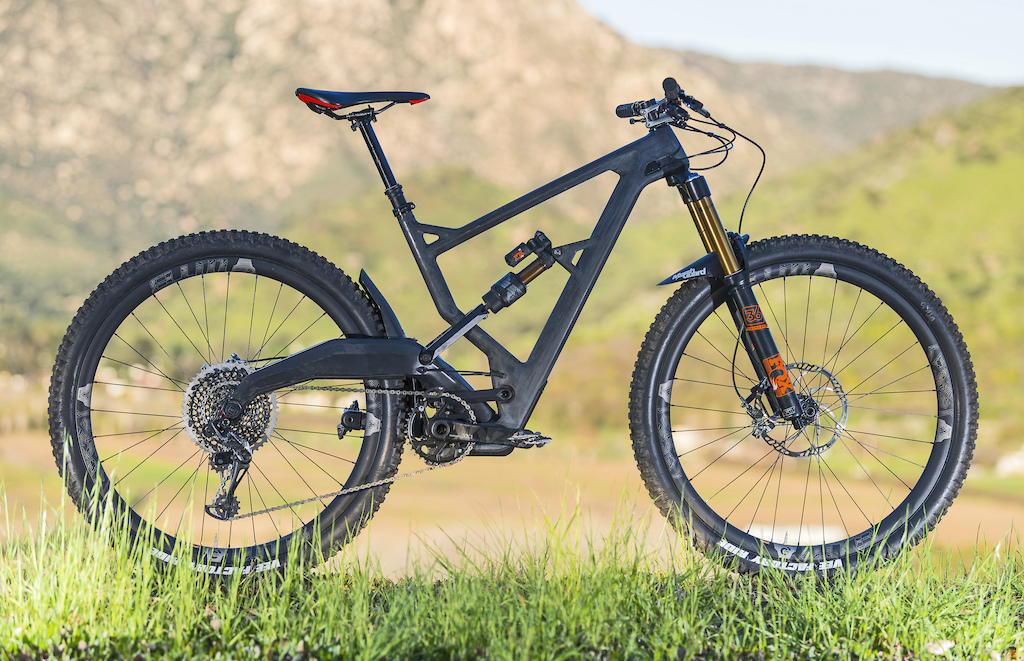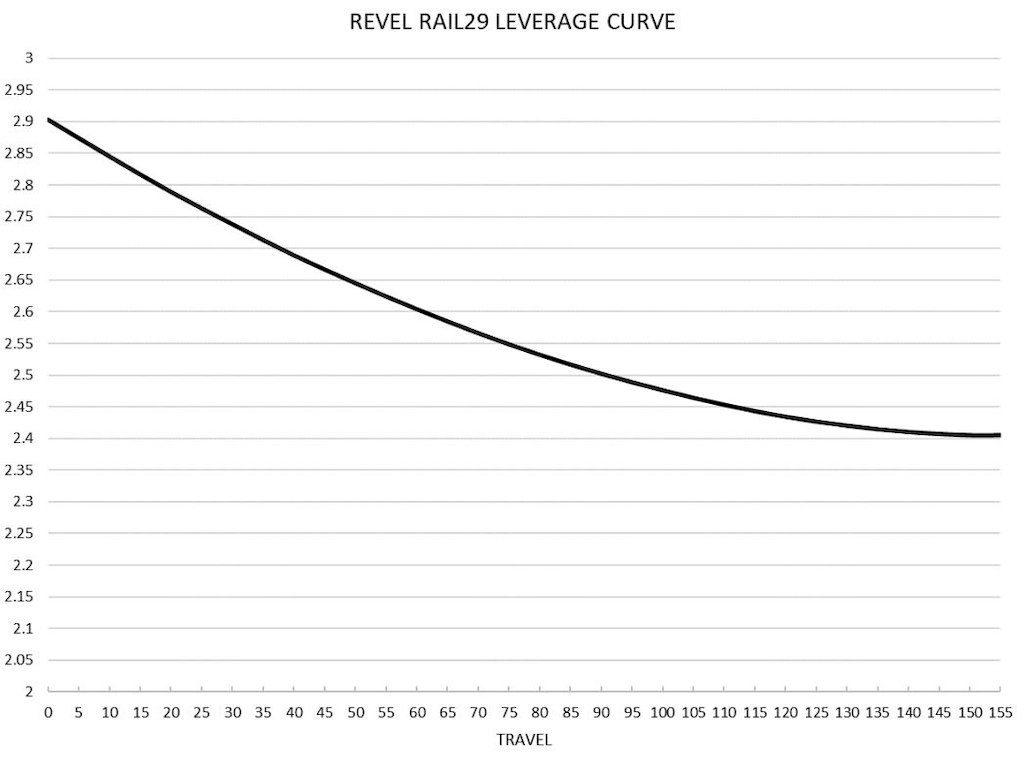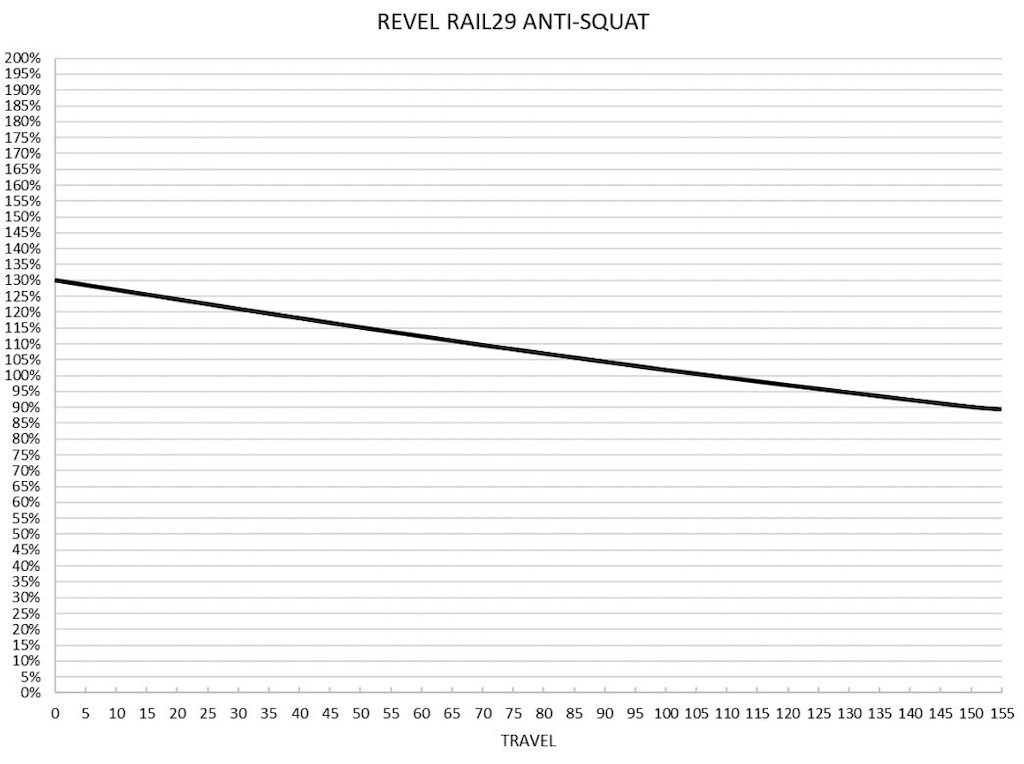Nerding Out: Do Kinematic Graphs Really Describe Suspension Performance?
Recently I spotted this intriguing comment in Alicia Leggett's Revel Rail review.
The Rail's anti-squat and leverage curves don't look very different to many other modern bikes, so does that mean the suspension won't perform any differently?
This topic is something I've been thinking about a lot ever since I reviewed the Marin Wolf Ridge 9 back in 2018. That bike is one of three I've since tested using Naild's R3act suspension system, which features a sliding suspension component in combination with links. The marketing claims implied that it worked in a fundamentally different way to other designs, allowing it to take all the best characteristics of other systems with none of the downsides. Information on how it did this was nonexistent (and I did ask, a lot), but I was told not to worry about the kinematic graphs because Naild's system worked in a different way to other bikes, so its true brilliance couldn't be explained using the usual methods.
By the way, if you're wondering what terms like "anti-squat" and "leverage curve" even mean, I recommend Dan Roberts' articles on the topic here and here.

The Naild suspension system looked different and was tuned in an interesting way, but its behaviour could be explained by the usual suspension analysis tools.
In reality, the Naild system operated in the same plane of physical constraints as any other suspension system. It's essentially a four-bar suspension layout, except it uses a slider in place of one of the link pivots, so the usual tools (anti-squat, anti-rise, leverage ratio, etc...) explain how it operates about as well as any other bike. As you can see in this article, it was tuned toward high anti-squat and high pedal-kickback compared to most other bikes, and that's no bad thing as it made it pedal very efficiently despite a lightly-damped shock, but there were drawbacks to this.
So, I would be very skeptical of any brand telling you that their layout - no matter how many links, sliders or flippy-spinny bits it has - is so revolutionary that has benefits that can't be seen on any kinematic graphs, or that they manage to side-step the usual compromises. Suspension is all about compromises.
But to answer the core of the question, do these graphs tell the whole story of how the suspension works? Absolutely not.
Firstly, there's a lot more to unpack in these wiggly lines than is sometimes made out. People often quote a single number - such as the percentage anti-squat at sag, or the change in leverage ratio between the start and end of the travel - as if it tells the whole story, but there's a lot more to it than that. For example, the gradient of the anti-squat curve may affect how firm the suspension feels under power, or the shape of the leverage curve as it wiggles between the start and end points may be more important than the leverage numbers at those two points.
Another caveat that's often forgotten is that anti-squat and anti-rise depend on the center of gravity position of the bike and rider, so if you're comparing anti-squat curves between two different bikes, they aren't directly comparable unless both are calculated with the same set of assumptions for the COG position. The frame size, chainring and sprocket selection also have to be the same to make things fair. But with all of those caveats and subtleties out the way, the kinematic graphs do describe the suspension linkage very well.
But how the suspension behaves and how the bike actually rides depends on much more than the frame linkage. The choice of shock and its damping tune are arguably more important still - in the case of that Marin Wolf Ridge, the light damping tune is probably the main reason the suspension performance was so unusual and opinion-dividing, not the slider. Meanwhile, the geometry, wheel size and componentry can also affect how much harshness is transmitted to the rider. All these factors and more interact with one another in a way that's too complicated to put into any graph. That, I hope, means we bike reviewers will still have a job for the foreseeable future.
Author Info:
Must Read This Week
Sign Up for the Pinkbike Newsletter - All the Biggest, Most Interesting Stories in your Inbox
PB Newsletter Signup





It's a lovely shock and feels great when it's working, but based on others i've talked to and my own experience, the longevity just isn't there. If you keep it, I'd recommend sending it in for service well before you calculate that it is due, because it's unlikely it will make it to the service interval (I believe it's 125 hours) before it has issues. Which is a real bummer for a shock that is this expensive.
Cavitation isn't what you think it is:
nsmb.com/forum/forum/gear-4/topic/understanding-suspension-cavitation-4163
But the thing that tipped me off was the sloshing sounds and the lack of damping.
When I rebuild them I set the ifp at minimum depth and raise the ifp pressure by 25psi.
Gives a better chance against the huge pressire the air chamber at bottom out
Thanks for all the people setting me straight!
Also this should be a major thing about fox, they have made several design changes over the life of the x2/dhx2 life cycle that's actually made them less reliable. (Although the 2019 air can update did help) they are genuinely bad shocks atm, and poor knock off of what ccdb could do (excluding air versions)
@cascadecomponents why don’t you just design or consult for the rear suspension kinematics of brands? You could retire early.
This crazy son of a bitch gets it!
@brianpark, @mikelevy, @mikekazimer get this guy a huge prize of some sort, frig yeah!
Is there a way to make this comment appear at the top of every bike and suspension review?
Make it bold, and flash and other cool shit
Along with a comment on the uselessness of suspension clicks for pros in bike checks (other than pure curiosity)
That there is no “right” suspension fork, or brake, or wheel size, flat or clipped, just a personal preference.
And the carbon they use for bikes is fairly low end compared to aerospace/defense/motorsports.
So just remember when you're bombing down some steep shit, your bike was designed by an underpaid C minus student using low end materials.
And as for materials and techniques, when Speshy partnered with the McLaren F1 carbon guys for some frame designs, you can bet they didn't use the cheap crap.
Bikes are like anything else, they range from Ferrari to Ford in terms of quality. I've got an F-150, I know low quality! :0
en.wikipedia.org/wiki/Euler%27s_identity
So e^(i*pi) = -1 and then e^(i*pi) - 1 = -2
(We should have an Oregon Water Nerds ride at some point. There are dozens of us!)
E^(p*i*i)+1=0
E^p*i^2+1=0
Also the formula for the volume of pizza with radius z and heigh a is pizza.
Quick mafs for yall
I'm with you physics laws are very hard to break haha.
Kinematics are physics based and 100% accurate, but I argue we can look are better metrics.
Conventional leverage ratio curves describe perfectly the mechanical advantage of a vertical input at the contact patch on the shock. They are 100% correct but how relevant are they to riding?
What about the contribution of the shock? why is it always discussed in a subjective way?
looking at the combined leverage AND shock rate (which varies a lot) could tell us so much more!
Also, MTB ride on bumps, why are we only checking vertical leverage ratio?
The added suppleness of a high pivot doesn't show on a leverage curve. You can look separately at the axle path but how to synthetize this in your head? impossible.
Why not use vertical leverage AND leverage for different bump heights? Just like we look at anti squat for different gears.
If you are interested, here:s how I advocated for better metrics a couple years back: www.datumcycles.com/tech/#iFrame3
As to specific questions regarding shock contribution or high pivot suppleness, these are also dependent on shock speed not only position, so how to plot them?
Consider the following:
Is the reviewer like you?
Is the reviewer biased?
Do you have enough to experience to know good from bad?
Many folks ride bikes that are so poorly set up that it wouldn’t matter what bike they were riding.
A good bike with a poor set up will ride poorly.
One of the most telling things is to see how poorly demo bikes are set up, the first thing I do when I get a demo … once I’m out of sight of the tent, I pull out the multi tool and the shock pump, fifteen minutes of tweaking until it feels adequate, then I go ride for at least an hour, on terrain I know, and I continue to tweak throughout the ride.
So many variables, which the article does a good job of analyzing. Don't necessarily trust the marketing, don't trust the linkage graphs alone, but also realize the reviews have a certain amount of subjectivity in them.
I ride the Xquareone trail (180mm) and the downhill (218mm) and love riding them because of the high antisquat. Pedaling just doesn't get the bob that I would feel or see on other bikes.
I’m gutted that I never ended up being able to get one. I’m constantly on the lookout for either one of those second hand. The DH model is my perfect bike. I have no uplift so being able to climb to the top of the trail and still have an amazing ride with all that travel down is pretty valuable to me.
It took a little bit for me to find both of mine...found them on PB buy sell. Let me know if you are want any help tracking one down or logistics.
Even though they've sunsetted both models I'm still getting great help from the CS emails. Little odds and ins that I lose or damage.
It is all about matching the rider to the bike. There is no single set of kinematics that are right. What is perfect for one rider is terrible for another.
RAAW sells two links for their frames, based on your weight.
In general, lower LRs require less dampening and puts less stress on the shock.
I also think Seb hit the nail on the head: the slope of the anti-squat curve. If the anti-squat curve slopes off steeply, you can get a cascading effect of "pedal hard => sag suspension a little => AS goes down so it sags more => AS goes down even more and you sag even more." This does not give a stable response to pedaling!
When you combine the shock spring (whether that's a linear coil or an air spring with any number of volume spacers) with the LR curve, you're able to estimate the wheel rate and the actual travel for a given force input at the wheel. Shocks (even from the same maker) are quite different in their spring profiles so the variability is huge when it comes to how a bike feels (X2 shock with no volume spacers vs. Float X with 0.6ci volume spacer, for instance).
And that's just spring forces! Add damping to the mix in combination with a higher or lower leverage ratio (giving lower or higher damping forces at the wheel, respectively) and the variables are too many to suss out on paper or boil down to one chart or graph. One person could ride two "similar" bikes and they can feel completely different based on these many factors.
This is actually one of the easier questions, the key difference is that 4 bar allows you to eliminate brake jack. When braking the brake makes the structural member that the brake is attached to want to rotate in the same direction that the wheel is going. On a LDSP this causes the chainstay to try and rotate which compresses the shock and stops it working as naturally. On a 4 bar the bearing between the chainstay and the seatstay prevents this moment from trying to rotate the seatstay and thus the shock is much less affected by braking
Same with DW link, typically tuned firm but can be made squishy/soft (Giant, Niner).
I'm a caveman with this stuff, I was wetting myself at 80mm elastomer suspension
back in the day, now it proves pretty shit by todays standards. Being simple and having fun : )
I think theres prob some magic in the Evil delta that just isnt in a simple 2d graph informed by pickup points.